Sushant S. Mahajan
How to Train Your Flare Prediction Model: Revisiting Robust Sampling of Rare Events
Mar 12, 2021
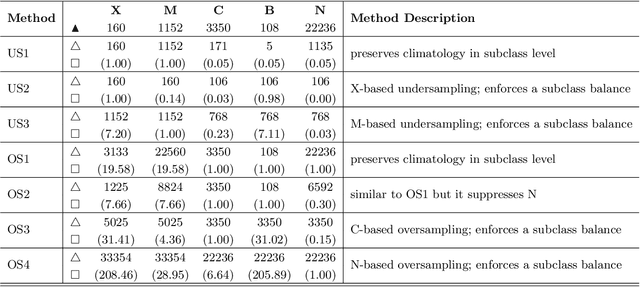
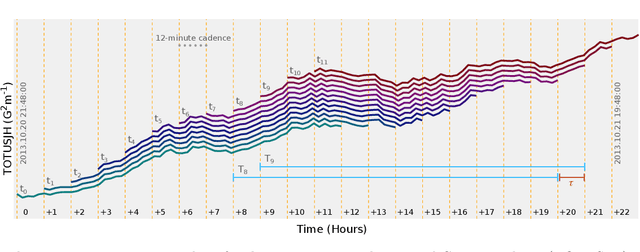
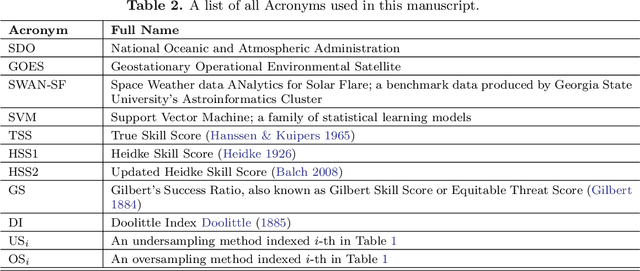
Abstract:We present a case study of solar flare forecasting by means of metadata feature time series, by treating it as a prominent class-imbalance and temporally coherent problem. Taking full advantage of pre-flare time series in solar active regions is made possible via the Space Weather Analytics for Solar Flares (SWAN-SF) benchmark dataset; a partitioned collection of multivariate time series of active region properties comprising 4075 regions and spanning over 9 years of the Solar Dynamics Observatory (SDO) period of operations. We showcase the general concept of temporal coherence triggered by the demand of continuity in time series forecasting and show that lack of proper understanding of this effect may spuriously enhance models' performance. We further address another well-known challenge in rare event prediction, namely, the class-imbalance issue. The SWAN-SF is an appropriate dataset for this, with a 60:1 imbalance ratio for GOES M- and X-class flares and a 800:1 for X-class flares against flare-quiet instances. We revisit the main remedies for these challenges and present several experiments to illustrate the exact impact that each of these remedies may have on performance. Moreover, we acknowledge that some basic data manipulation tasks such as data normalization and cross validation may also impact the performance -- we discuss these problems as well. In this framework we also review the primary advantages and disadvantages of using true skill statistic and Heidke skill score, as two widely used performance verification metrics for the flare forecasting task. In conclusion, we show and advocate for the benefits of time series vs. point-in-time forecasting, provided that the above challenges are measurably and quantitatively addressed.
Challenges with Extreme Class-Imbalance and Temporal Coherence: A Study on Solar Flare Data
Nov 20, 2019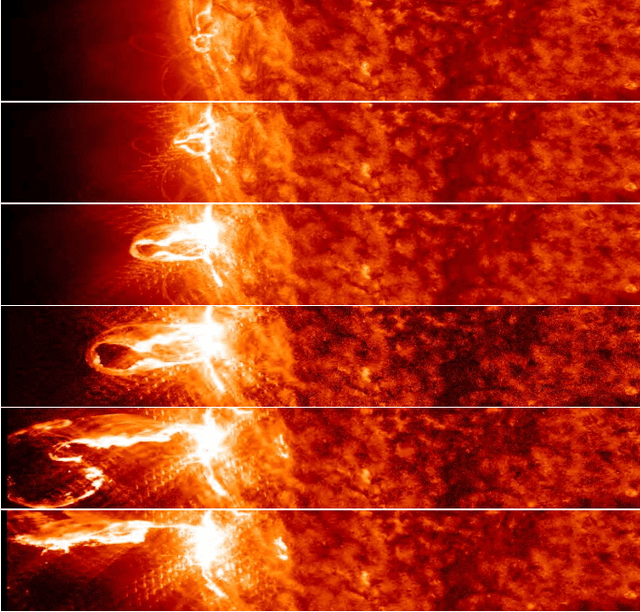
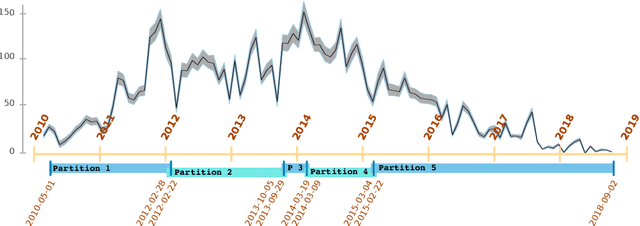
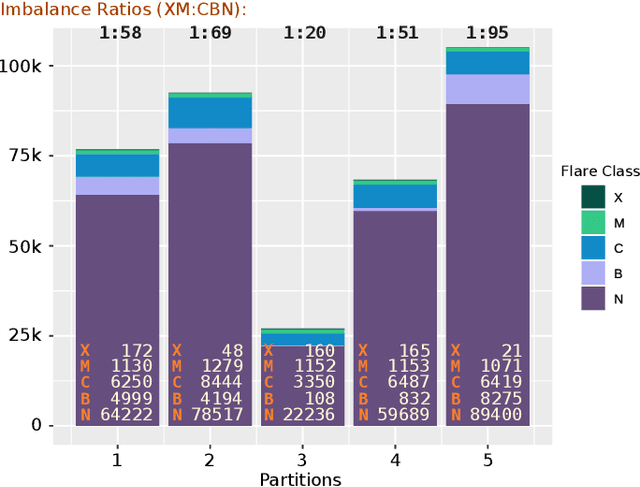
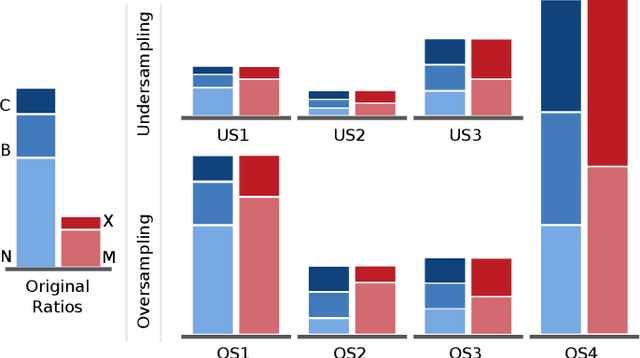
Abstract:In analyses of rare-events, regardless of the domain of application, class-imbalance issue is intrinsic. Although the challenges are known to data experts, their explicit impact on the analytic and the decisions made based on the findings are often overlooked. This is in particular prevalent in interdisciplinary research where the theoretical aspects are sometimes overshadowed by the challenges of the application. To show-case these undesirable impacts, we conduct a series of experiments on a recently created benchmark data, named Space Weather ANalytics for Solar Flares (SWAN-SF). This is a multivariate time series dataset of magnetic parameters of active regions. As a remedy for the imbalance issue, we study the impact of data manipulation (undersampling and oversampling) and model manipulation (using class weights). Furthermore, we bring to focus the auto-correlation of time series that is inherited from the use of sliding window for monitoring flares' history. Temporal coherence, as we call this phenomenon, invalidates the randomness assumption, thus impacting all sampling practices including different cross-validation techniques. We illustrate how failing to notice this concept could give an artificial boost in the forecast performance and result in misleading findings. Throughout this study we utilized Support Vector Machine as a classifier, and True Skill Statistics as a verification metric for comparison of experiments. We conclude our work by specifying the correct practice in each case, and we hope that this study could benefit researchers in other domains where time series of rare events are of interest.
Toward Filament Segmentation Using Deep Neural Networks
Nov 20, 2019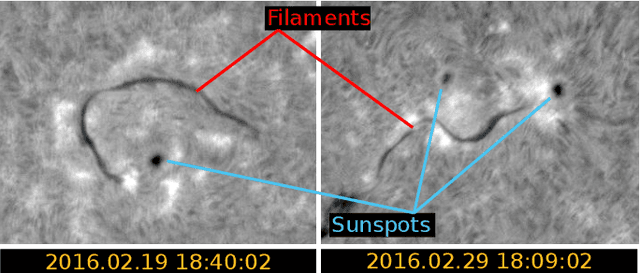

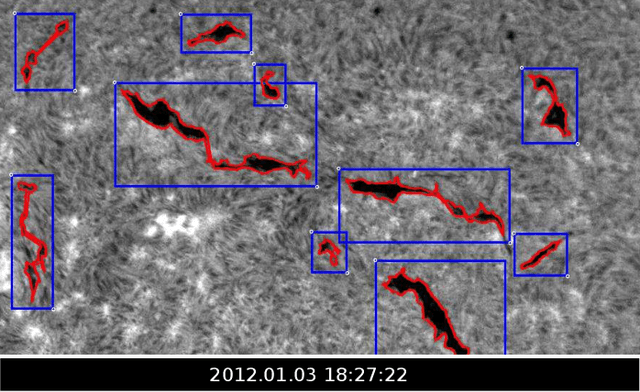

Abstract:We use a well-known deep neural network framework, called Mask R-CNN, for identification of solar filaments in full-disk H-alpha images from Big Bear Solar Observatory (BBSO). The image data, collected from BBSO's archive, are integrated with the spatiotemporal metadata of filaments retrieved from the Heliophysics Events Knowledgebase (HEK) system. This integrated data is then treated as the ground-truth in the training process of the model. The available spatial metadata are the output of a currently running filament-detection module developed and maintained by the Feature Finding Team; an international consortium selected by NASA. Despite the known challenges in the identification and characterization of filaments by the existing module, which in turn are inherited into any other module that intends to learn from such outputs, Mask R-CNN shows promising results. Trained and validated on two years worth of BBSO data, this model is then tested on the three following years. Our case-by-case and overall analyses show that Mask R-CNN can clearly compete with the existing module and in some cases even perform better. Several cases of false positives and false negatives, that are correctly segmented by this model are also shown. The overall advantages of using the proposed model are two-fold: First, deep neural networks' performance generally improves as more annotated data, or better annotations are provided. Second, such a model can be scaled up to detect other solar events, as well as a single multi-purpose module. The results presented in this study introduce a proof of concept in benefits of employing deep neural networks for detection of solar events, and in particular, filaments.
 Add to Chrome
Add to Chrome Add to Firefox
Add to Firefox Add to Edge
Add to Edge